19+ Sample Monthly Budget Worksheets
-
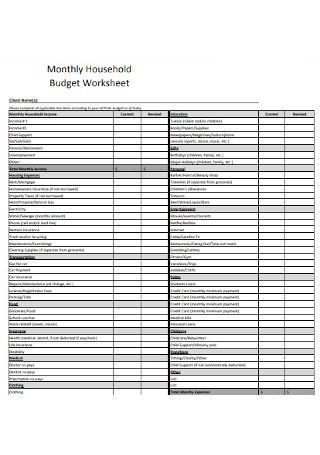
Monthly Household Budget Worksheet
download now -
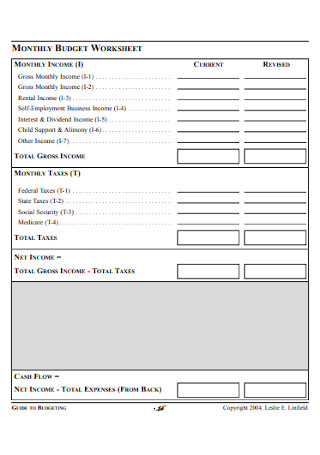
Sample Monthly Budget Worksheet
download now -
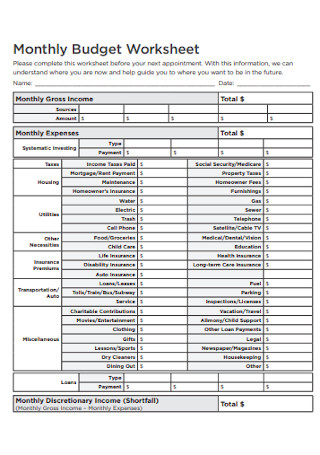
Monthly Budget Worksheet Example
download now -
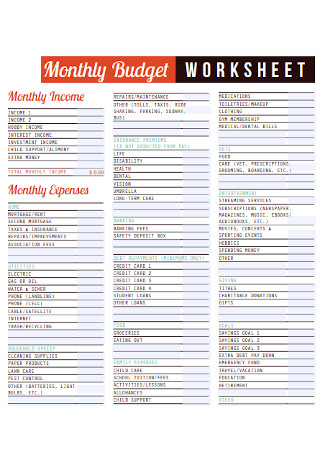
Basic Monthly Budget Worksheet Template
download now -
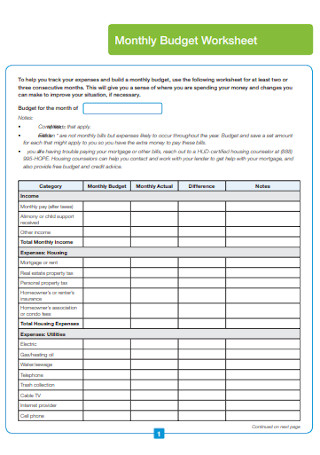
Monthly Home Budget Worksheet
download now -
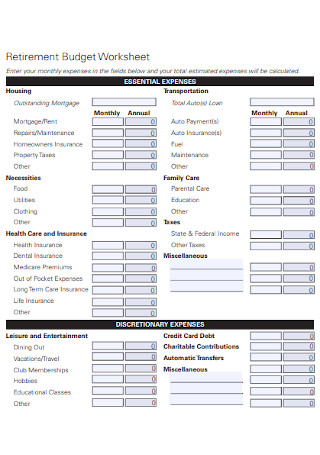
Retirement Budget Worksheet
download now -

Monthly Budget Sheet Example
download now -
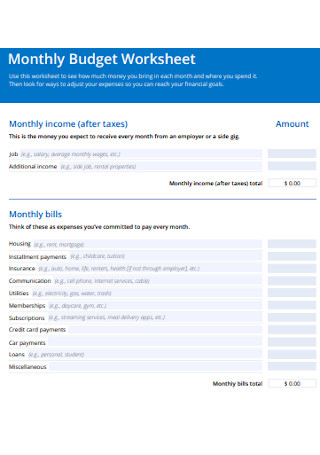
Monthly Income Budget Worksheet
download now -
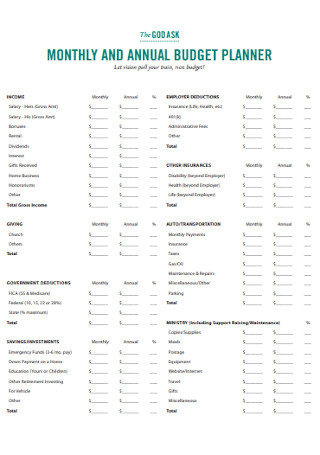
Monthly and Annual Budget Worksheet Template
download now -
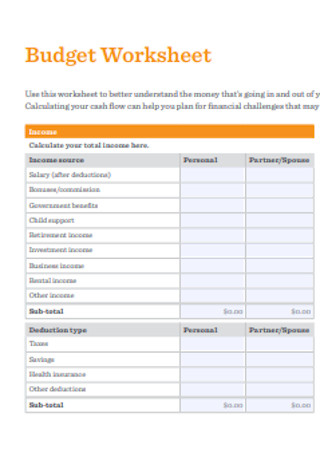
Standard Budget Worksheet Template
download now -
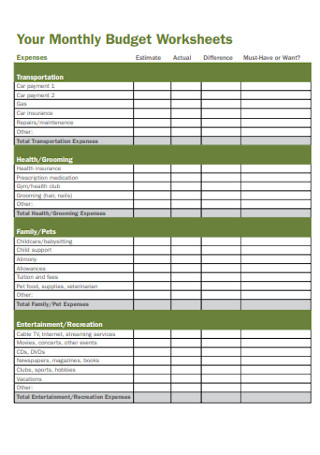
Your Monthly Budget Worksheets
download now -

Monthly Budget Expense Worksheet
download now -
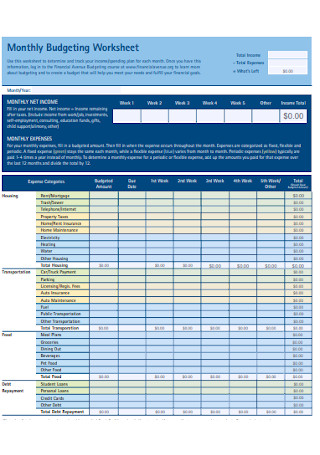
Simple Monthly Budget Worksheet
download now -
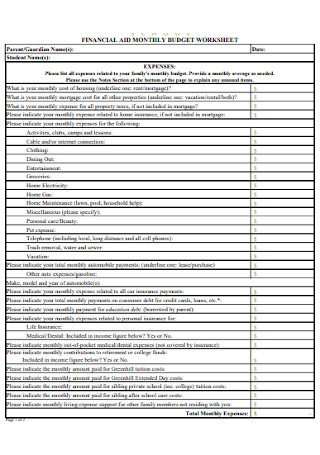
Financial and Monthly Budget Worksheet Template
download now -
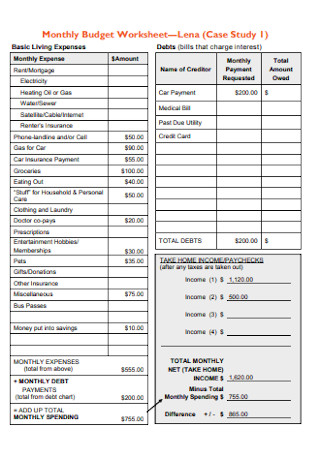
Basic Monthly Expenses Budget Worksheet
download now -
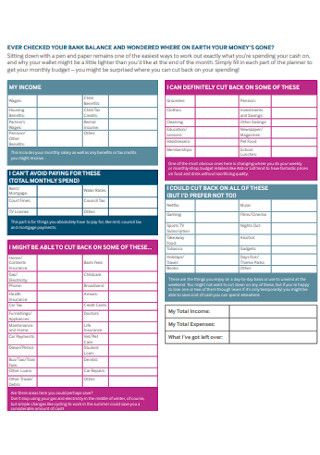
Monthly Budget Planner Worksheet Template
download now -
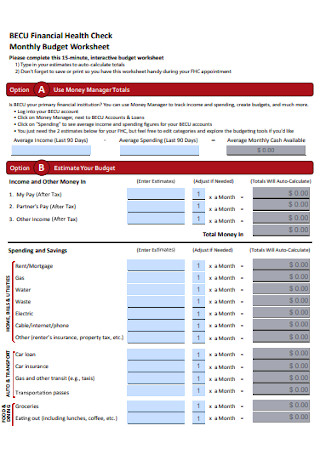
Monthly Health Budget Worksheet
download now -

Monthly Budget Statement Worksheet Template
download now -

Monthly Retirement Budget Worksheet
download now -
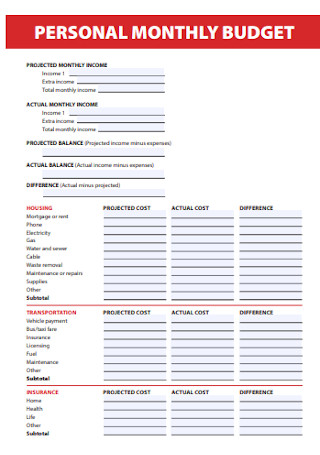
Personal Monthly Budget Template
download now
FREE Monthly Budget Worksheet s to Download
19+ Sample Monthly Budget Worksheets
What Is a Monthly Budget Worksheet?
Why Are Monthly Budget Worksheets Important?
The Standard Categories of a Monthly Budget Worksheet
How to Create a Monthly Budget Worksheet like a Pro
FAQs
What are some tips to make the most out of your monthly budget worksheet?
What is the 50/30/20 rule?
What is the 70/20/10 rule?
What Is a Monthly Budget Worksheet?
A monthly budget worksheet is basically your ultimate tool in planning, organizing, tracking, and managing your expenses for the whole month. Much like a monthly budget plan, you can use the worksheet to calculate your monthly finances, categorize each type of budget, or check how much money you have distributed. And you are guaranteed to make budget management a lot easier, especially if you know how the budget worksheet works. Treat this editable tool as your professional or personal finance planner until you can leverage money with a purpose such as boosting your savings, paying bills on time, and living a happier life.
According to N26, one of the easiest budgeting methods is the 50/30/20 rule—50% on your needs, 30% on your wants, and 20% on your savings or debt payments.
Why Are Monthly Budget Worksheets Important?
A budget worksheet makes anyone’s life easier. As a start, it is very important so you can track your monthly spending and plan for future expenditures. Maybe you come across a point where you are consistent with adding savings in your bank account per month but you still have not saved the amount you want at all. But the reality is you were inconsistent with the amount of savings you added to your account and you have not considered what other expenses you have that caused the savings amount to be low. Thankfully, monthly expense sheets bring you a more visual or tabular result so it is easy to navigate all sorts of expenses you recorded.
Also, monthly budget worksheets can answer your essential financial questions. As long as you keep documenting your monthly budget, rest assured, various questions like “How did my small business income go to zero that fast?” will be traced shortly. The best part is you can personalize your budget worksheet so you may opt for a simple budget planner to a more hybrid budget worksheet. An example is to also make worksheets for your daily budget, weekly budget, and more. Go for whatever works best for you.
The Standard Categories of a Monthly Budget Worksheet
There is no denying that a monthly budget worksheet doesn’t have to be a one-document-fits-all type of document. You can make it as your monthly expenses at work, a family expense worksheet, or any other example. But if you need help on what the basic budget categories are for your document, here are ten examples:
How to Create a Monthly Budget Worksheet like a Pro
Are you ready to make your own monthly budget worksheet? After getting introduced to its meaning, significance, and different budget categories, you now have the upper hand in making the worksheet. And it gets better using Sample.net’s free samples as your guide. So without further ado, here are the steps you need to follow in making a professionally made monthly budget worksheet:
Step 1: Draft a Breakdown of Your Regularly Monthly Expenses
You already know that everyone’s budgeting strategies and spending habits are different. So you should come up with a personalized monthly budget that coincides with your regular monthly expenses. First things first, list down what possible expenses you would be involved in for a whole month. You can base on your salary history to calculate the average monthly income. Or, run over to the grocery receipts for ideas on how much each item you often purchase costs. The more details you can cover the better.
Step 2: Use a Sample Monthly Budget Worksheet Template
After drafting your monthly expense breakdown, don’t forget to check out the premade monthly budget worksheets in this article. Those are your best tools to come up with the worksheet in just a few minutes. And you can even download, edit, or print your monthly budget so you need not stick with the standard examples only. Also, you can try all sorts of related budget templates such as a free monthly budget template, church budget sheet, university budget template, blank simple budget proposal, printable budget project plan, and a printable financial budget plan.
Step 3: Identify Your Different Budget Categories
You are already aware of the ten basic budget categories, as discussed earlier. So how many budget categories or which of those categories are worth adding to your monthly budget worksheet? From housing to miscellaneous, ensure that you know what type of budgets you manage. That way, it gets easier to outline the different budget categories in your worksheet. Also, you can use your breakdown of regular monthly expenses as reference in identifying each category.
Step 4: Label and Allocate Your Spending for the Month
On your sample template, label your worksheet. This is where you allocate the details from your name, monthly budget category, and more. And with each budget category, you can calculate your projected cost, actual cost, and difference. Also, you can insert any budget calculator in your worksheet so you need not manually calculate per budget. And remember that proper labeling matters. Otherwise, you might mix up the amount for insurance from the personal expenses.
Step 5: Add Tables to Make Calculations Run Easily
Besides the calculators, make room for tables, graphs, and organizational charts. Sometimes, what you need is an easy-to-use visual tool to manage expenses rather than writing everything word after word. A tabular result even makes your worksheet easy to follow, especially if it suits your preferred format. Hence, optimize the editable template’s design, layout, and other customizable features.
Step 6: Document Your Expenses Regularly
All effort given to making your monthly budget worksheet will only be wasted if you don’t even keep up with your expenses regularly. So in a month, you should record how much you spent and collected per day. As you tabulate the projected costs, you will slowly compare them with the actual costs anyway. And it is through recordkeeping that you can see if you have improved or got worse in budgeting. Simply come up with a thorough evaluation on your monthly budget worksheet if recording is done.
FAQs
What are some tips to make the most out of your monthly budget worksheet?
Here are effective ideas to optimize your monthly budget worksheet:
- Always review your previous and current expenses at the beginning of every month.
- Learn to be flexible, especially if one budget category needs more funds than a least important category.
- Take notes in your budget document regularly as you might forget about spending something you have not written on the worksheet.
- Don’t be discouraged if the amount accumulated after a month isn’t what you desired; it can evolve next month with some adjustments.
What is the 50/30/20 rule?
In budgeting, the 50/30/20 rule is an effective and easy method where you allocate 50% of your budget for needs, 30% for wants, and 20% for savings or debts.
What is the 70/20/10 rule?
Another effective budgeting rule is the 70/20/10 method. This means you leave 70% of monthly income for spending, 20% for saving, and 10% for giving. It depends on you regarding which budgeting method is your preference.
There is no doubt that money is crucial as a human being. And you need to handle your finances wisely to achieve a better quality of life. So do you think it is a good idea to just put your financial decisions in your head without a strategic plan? Decide correctly. In fact, mastering the system of tracking your monthly budget is a great start in securing a sunny financial future. Hence, create a monthly budget worksheet that suits your standards, budget categories, and personal decisions. Download a sample template now!
